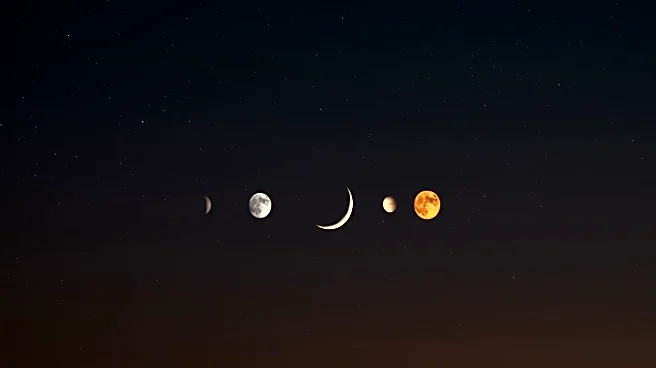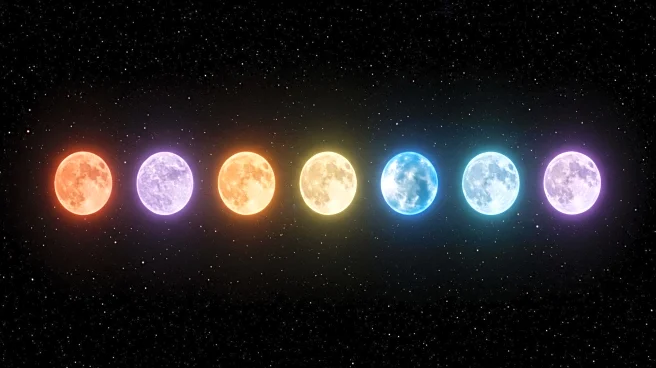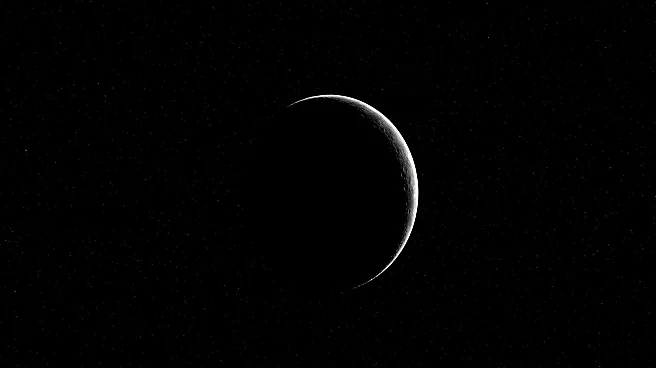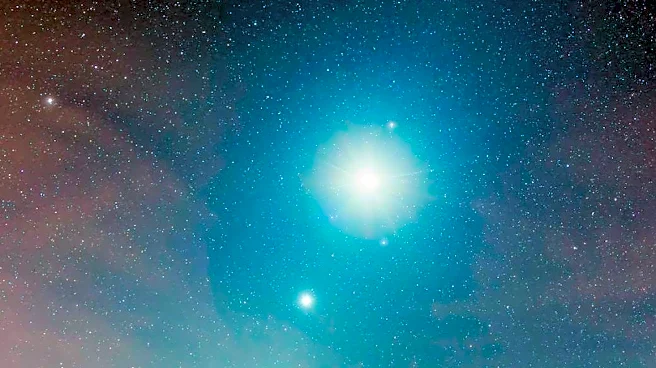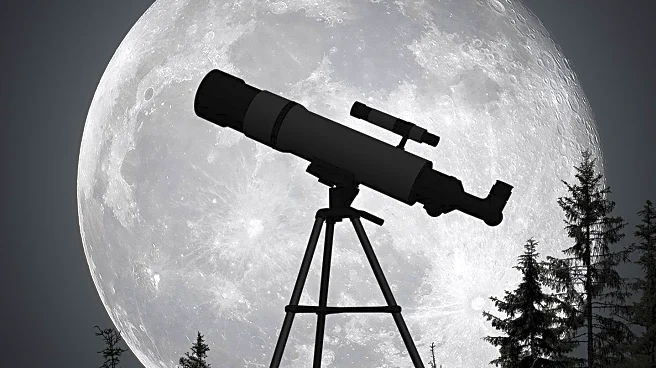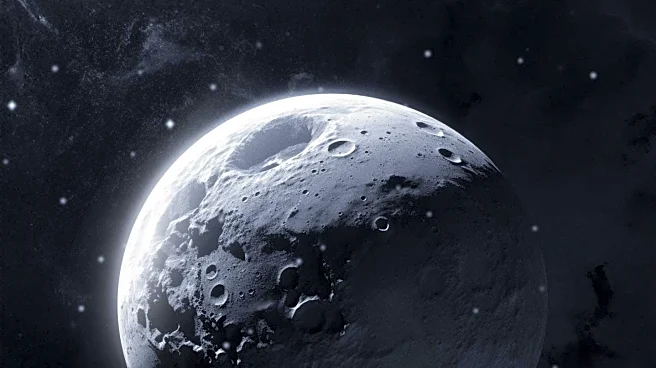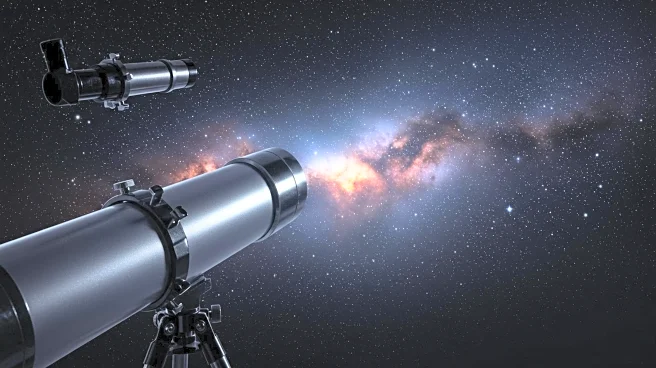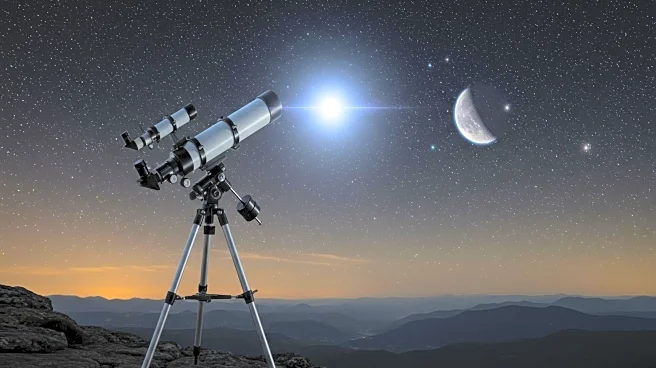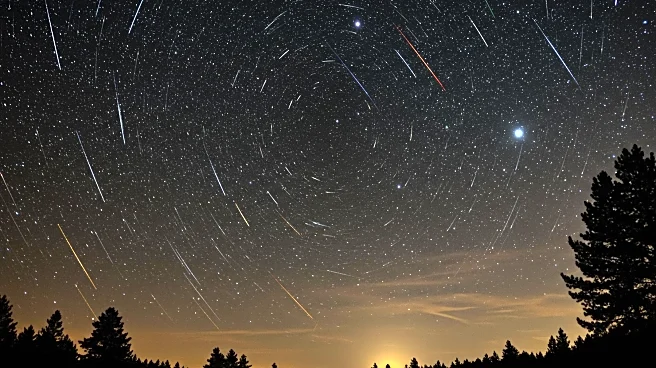What is the story about?
What's Happening?
On August 20, a razor-thin crescent moon will join Jupiter and Venus in the predawn sky, forming a celestial triangle visible in the eastern horizon. The moon will be positioned within the constellation Gemini, with Venus shining brightly as a 'morning star' and Jupiter forming the highest point of the triangle. This alignment offers a picturesque view for stargazers, with optimal viewing conditions occurring an hour and a half before sunrise.
Why It's Important?
This celestial event provides an opportunity for stargazers to observe the dynamic interactions between the moon and planets. Such alignments can enhance understanding of planetary movements and inspire interest in astronomy. The event also highlights the importance of timing and location in astronomical observations, encouraging enthusiasts to plan their viewing experiences. Observing these celestial bodies can foster appreciation for the natural beauty of the night sky.
What's Next?
Following this event, the crescent moon will continue its journey, sweeping past Venus and joining Mercury and the Beehive star cluster in the constellation Cancer. Stargazers are encouraged to use telescopes for detailed observations, revealing features such as the Grimaldi Basin on the moon and cloud bands on Jupiter. As the moon approaches its new phase on August 23, additional viewing opportunities will arise.
Beyond the Headlines
This event may inspire increased interest in astronomy and encourage public engagement with stargazing activities. It serves as a reminder of the intricate and ever-changing nature of the night sky, fostering curiosity and exploration.
AI Generated Content
Do you find this article useful?
